Art and Neuro-philosophy
A Metzingerian Point of View within Contemporary Art
July 7, 2016artist contribution,
As the focus in some aspects of contemporary art turns increasingly to the cognitive arena, artists adopt neuroscientific research to explore larger issues, political or otherwise. This text introduces the work of Thomas Metzinger, who developed a phenomenological model for how we experience consciousness, in tandem with that of Wilfrid Sellars, who stresses the importance of past experience in that process. The author makes a claim for interpreting certain works of art through a combination of these two approaches to create a possible map for understanding art concerned with how we construct realities. ‘Art and Neuro-philosophy’ is part of the Open! COOP Academy series Between and Beyond.
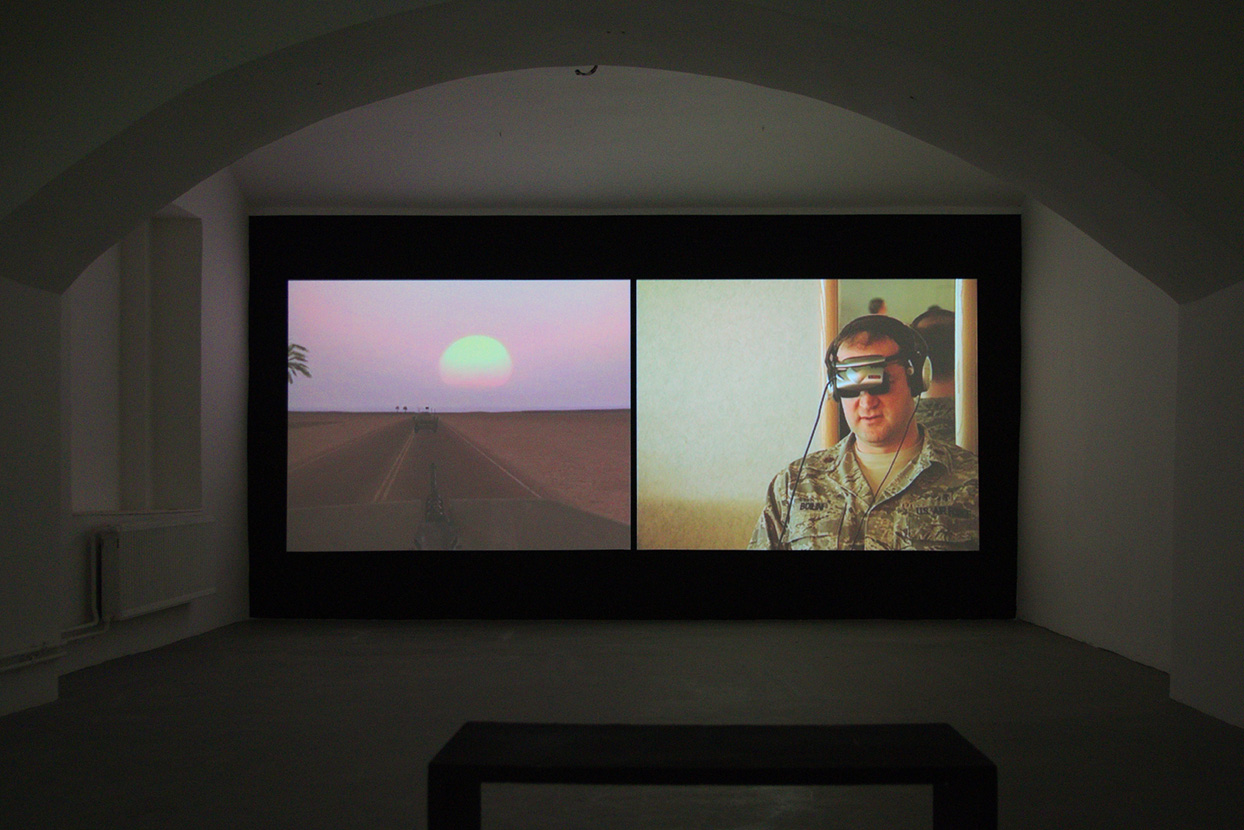
In the 1990s German philosopher Thomas Metzinger began working on a complex and suggestive understanding of the analysis of the mind and consciousness in phenomenological terms, developing his Phenomenal Self-Model (PSM) of the process through which we experience consciousness. Metzinger considers the ‘transparency’ of the PSM a phenomenal notion: that is, the experience of seeing represented content (what we perceive as reality) produced by the PSM but not the process that allows for the formation of that content. The relation between transparency and opacity, according to Metzinger, involves reducing the presence of large representational mechanisms inside the PSM in order to interact with the world since the ‘represented of the system’s self-representation occludes the representing that gave rise to it.’ 1 The PSM outlines a process of forming our consciousness and what is generated by it as represented content, or, in other words, between the human being as representing process (vehicle) and the representational content produced by it. The PSM receives real information from the world (Phenomenal World Model)2 and circulates it, at which point it might be transformed by behaviour (rational consciousness) or other causes. For Metzinger the self has always been a construction.
Looking to Metzinger’s philosophy can help us discern certain works of contemporary art that consider areas of neuroscience that are rethinking approaches to human behaviour and consciousness, such as how the vestibular system (how brain and inner ear interact in response to spatial control) might be manipulated through virtual reality to understand the processes of people’s individual constructions of reality. The three key characteristics of the PSM that help open up new ways to consider cognition are: ownership (incorporation of (PWM) elements in the PSM), location (perspective of the PSM within the PWM), and agency (recognition of events in the PWM as behaviour produced by the PSM).3 Thinking through examples of art in light of Metzinger’s model could help develop a cartography of that thinking. As others have done, I complement Metzinger’s phenomenological approach with the naturalist perspective of philosopher Wilfrid Sellars.4 Sellars opened the door to the ontological explanation of perception and behaviour, as well as knowledge that directly critiques theories based on the notion that sensory experiences ‘must provide a foundation for our knowledge.’5 As a coherentist, Sellars asserted that there is no given knowledge, and we are mere containers of the experiences we accumulate. If we consider Sellars’s perspective in tandem with Metzinger’s, rational self-consciousness is based on ‘parity’ in the interrelation between objective scientific / selfhood and subjective rationality.6 Today some scientists are working on updating humanistic approaches like ‘folk psychology’7 through cognitive and neuronal studies, which in turn are taken up by some artists – as described below – in making work about new social configurations, detecting cognitive abstractions, the alienation of the body and the construction of reality.
1. Ownership / Mineness
Harun Farocki’s two-channel video work Serious Games III: Immersion (2009) features a projection (right) of a seminar at MIT. There, a 3D virtual reality program, akin to a video game, is being used by a US veteran of the Iraq War. A second projection (left) shows the soldier’s perspective of what he sees through the goggles: a representation of similar scenarios he experienced in Iraq. Recalling Metzinger, we could say the representing system and represented content, both part of the representational state, are interchangeable in this work insofar as the virtual reality programme acts as the system that activates a person’s reality, phenomenologically seeing ‘subjects [...] transiently identified with a computer-generated external image of it.’8 Could virtual reality, or more precisely, computer-generated models be used to stimulate and activate previous lived situations, thereby questioning the position of the human body itself as the vehicle from which we experience? Farocki’s work shows a soldier activating a specific reality through the PSM in reliving experiences in Iraq through computer-generated images. The work, however, does not interpret physical perception from a position external to the body.
Interpreting Serious Games III: Immersion through Metzinger’s PSM is useful given Farocki’s project represents how the activation of self-consciousness patterns occurs. States can be produced in different ways, with virtual reality for instance, activating experiences beyond the central position of the subject itself. Metzinger’s PSM elucidates how first-person perspectival reality is created as an ongoing phenomenological process. For Sellars, and in light of Metzinger’s perspective, we are both phenomenal selves (scientific beings), as in the Metzingerian phenomenological understanding of the human being, and also rational subjects (social beings), as containers of previous experiences. The activation of neuronal structures through the use of the goggles is accompanied by the user’s historical background, which involves rational subjectivity, giving a sense of owning and experiencing a computer-generated representation in Iraq. Following Sellars, second-person virtual reality (VR) in Farocki’s project wouldn’t work in the same way with people who have not experienced a war that activates neuronal structures given those specific past experiences.
2. Location / Perspectivalness
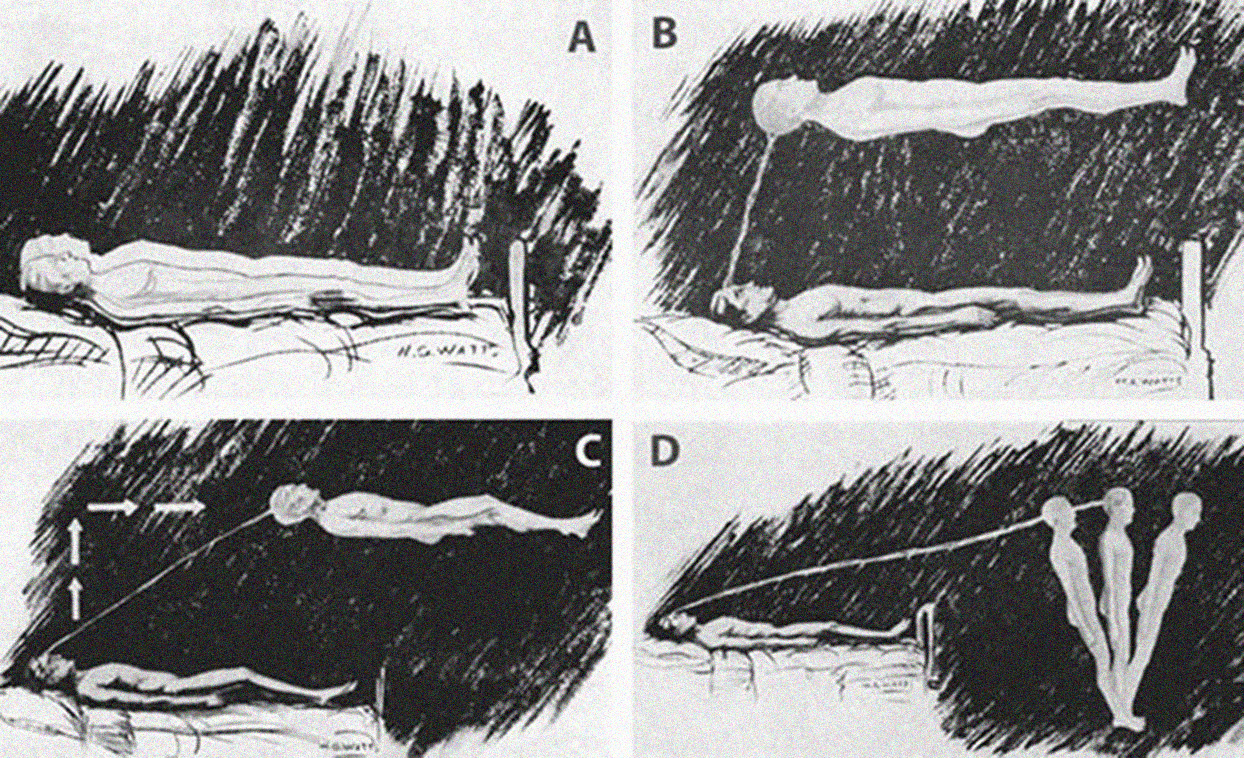
Second-person VR seems to achieve the same effect as Out-of-Body Experiences (OBEs),9 which deal with ‘the conscious experience of viewing one’s own body as embedded into and interacting with a virtual world or the experience that there is a “real you” not currently inhabiting your body.’10 Melanie Gilligan’s sci-fi miniseries The Common Sense (2014) poses cognition-related questions following the OBE model, specifically in terms of self-conscious location and perspectivalness. The Common Sense shows us a possible near future in which a device called 'the Patch' takes advantage of online networks and new discoveries in neuroscience. The Patch is a transmitter inserted on the human’s palate through which feelings and experiences can be sent to others. The development of this hardware / software, is a ‘two-way’ response system, wherein one’s feelings can be experienced directly by another. In Gilligan’s representation of people’s demonstrations of affection and the receiver’s experience of that, OBEs seem to be the core of a new capitalist framework based on the commodification of feelings and experiences – with this due to the very openness produced by advances in cognitive science. Two extracts from the dialogue make this explicitly clear: ‘I heard that people will pay to feel unemployed’ and ‘That’s a competitive area; there are so many people offering it.’
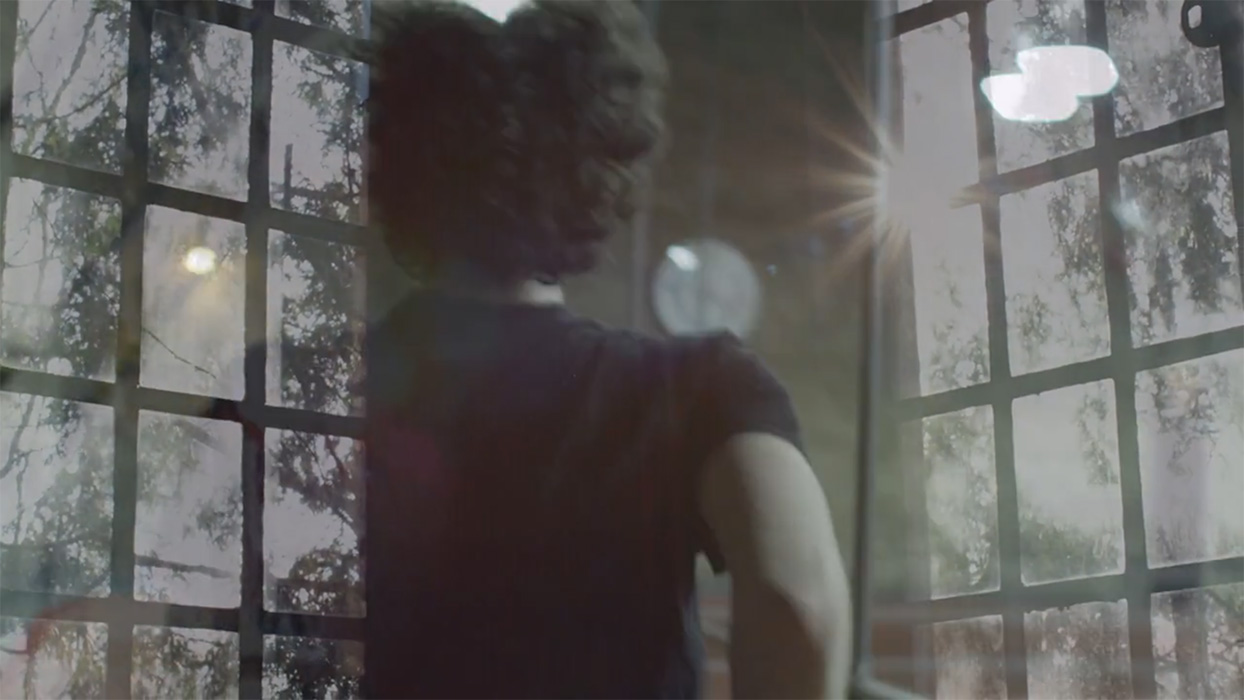
In the last few decades the concept of the mind has become more and more abstract. We have followed, through folk psychology, a prescientific way of understanding the mind in terms of essentiality centred around the idea of the ‘breath of life.’ According to Metzinger, ‘one can offer a representationalist analysis of OBEs by introducing the concept of a “phenomenal self-model.” A PSM is an integrated, conscious representation of the organism as a whole, including not only its spatial features, but also those of its own psychological properties to which it has access.’11
This image of what has been considered the soul in various cultural and theological approaches might correspond to the three key features of an OBE: 1) representation of one’s own body; 2) the body seen from a third-person perspective; and 3) a second representation of one’s own body outside of our central spatial reality.
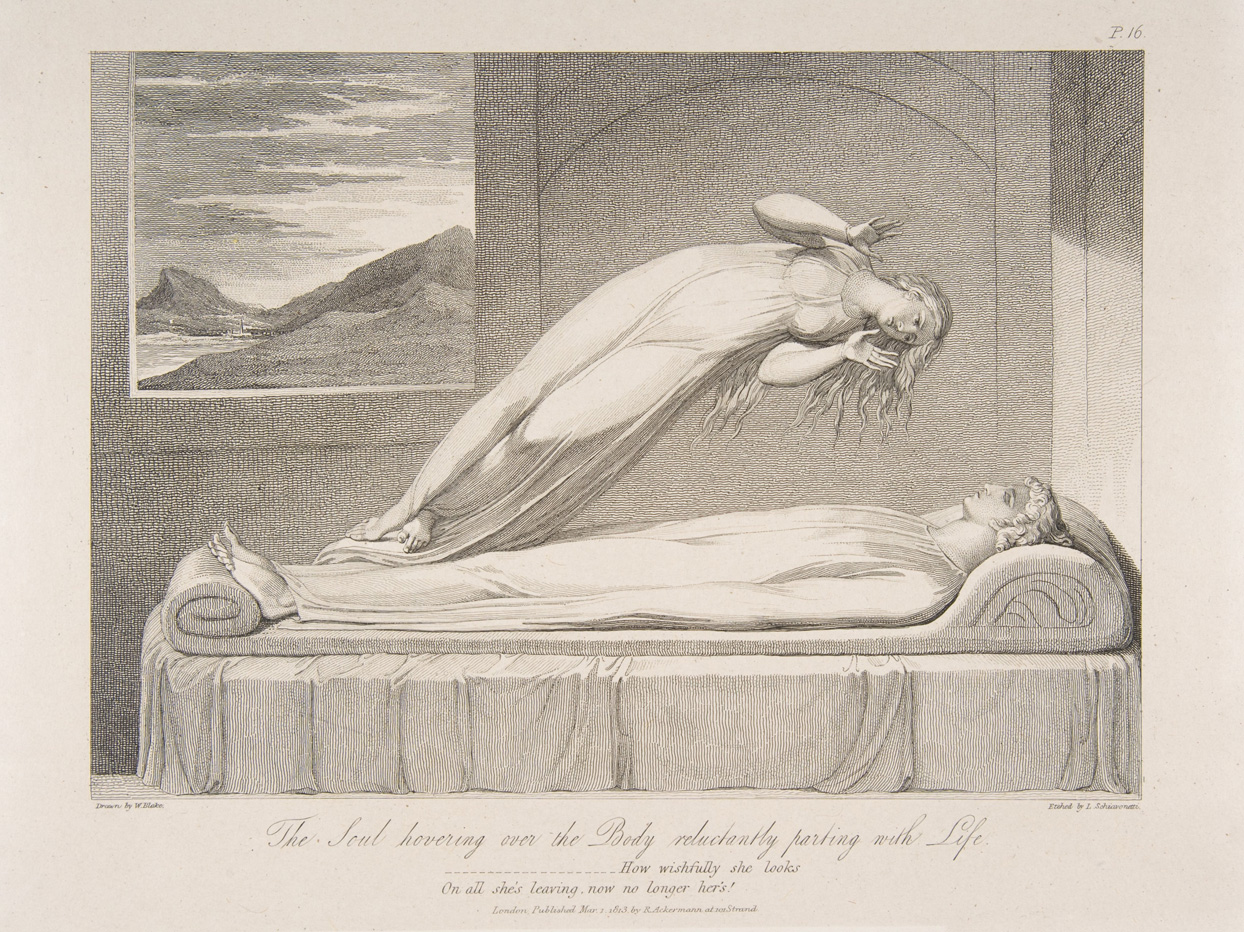
Of late OBEs are used to analyse how the brain generates a sense of self-consciousness through virtual reality goggles,12 concluding ‘that our perception of self within the body is tightly bound to how our brains process information from our senses.’13 An OBE is produced in different ways; basically it is a trick ‘in which the brain searches for a coherent global state.'14 It is provoked by a dysfunction at the temporoparietal junction. Some phenomenological states and experiences similar to OBEs can be induced by manipulating somatosensory and vestibular information. There are now some neuroscientists who are searching for specific neural correlates that produce OBEs, meaning that similar experiences might be shared by all human beings, and not only in neuronal and pathological cases.15
In spite of the fact that a computer-generated reality might fall in line with a disembodied Cartesian point of view, we have to understand that it is a non-central spatial representation of the self-model, far off from bodily agency in subjective terms: ‘You see your own body, and you recognize it as your own, but presently it is not the body as subject.’16
Looking back to Gilligan’s work, OBEs, as characterized by Metzinger, can be considered further in terms of how the representation of one’s body, from a third-person perspective, has turned into the representation of another’s body from that third-person perspective. The Patch might be a semi-embodied development inserted in the body of the virtual reality programme in Farocki’s work, which gives a better approximation of the phenomenological state produced in OBEs, but in this case closer to a speculative scenario in which the market is offering new ways of feeling the other's experiences. While OBEs in a sense see us from an outside perspective, the futuristic development of Gilligan’s work has exceeded the relation of ‘empathy’ in human beings to the point that our motions are tracked and our behaviour is translated. Reflecting on Farocki’s work in connection to Sellars, due to different neuronal structures developed according to past experience, and as Gilligan speculatively presents, these types of disembodied experiences won’t work in the same way for everyone.
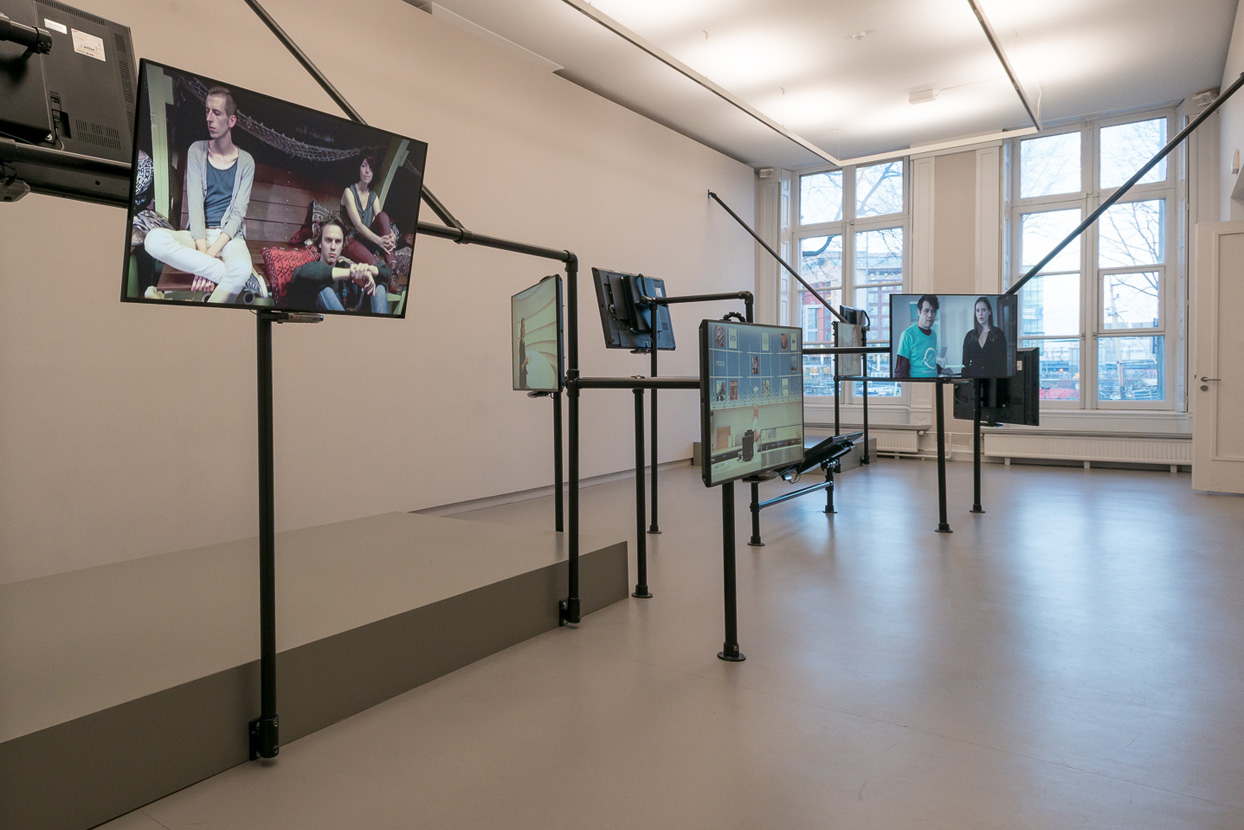
Sellars marries rational subjectivity to human self-consciousness, something demonstrated in the above works. At one point in The Common Sense we see how new social configurations have been produced due to this way of sharing emotions in terms of people trying to live morally, or in the understandings put forth on how we feel in different contexts like that of protests or educational environments. That is, new social abstractions might be produced precisely through this kind of empathy, like new forms of collectivities based on affections which might influence educational platforms or political organizations understanding different affective backgrounds of their integrants.
3. Agency / Selfhood
A disease called anosognosia (denial of illness in Greek) is helpful in considering agency. The first documentation of it was in 1914 by Joseph Babinski, who found some of his patients paralyzed on the left side of the body due to damage to the brain’s right hemisphere caused them to deny their paralysis. There are different degrees of severity, with some patients unable to manage specific tasks requiring the left hand, to complete denial of the left arm being part of their bodies and being ascribed to a relative. The latest research on this disease concerns issues related to defence mechanisms,17 its social or biological role, memory functionality, tacit knowledge, the ‘self’ and unity of conscious experience. The patients frequently use various euphemisms like ‘I’ve never been very ambidextrous.’ Or for those who ascribe part of the left sides of their bodies to relatives, ‘This arm belongs to my son.’ The confabulation recurs.
The vestibular system, which in connection with the brain generates orientation, plays a major role in making sense of coherency in response to disturbances as with those who suffer from anosognosia. Some studies confirm that injecting ice-cold water into the left ear of an anosognostic patient can stimulate the vestibular system into making them aware of their paralysis and recovering a body image. The set of neuronal events and mechanisms which engender anosognosia are well known, making it possible to understand the ‘process of constructing an autobiographical self-simulation which takes place in order to preserve the overall coherence of the currently active model.’18 We might be able to study the mechanisms governing the different processes of reality construction through various manipulations – for instance, physically through the injection of cold water or phenomenologically through virtual reality programmes. There exists a ‘commonality in the neurofunctional architecture underlying the process of conscious human self-modeling.’19
Anosognostic patients fill in explanatory gaps with inaccurate information when accurate information is not available. It likewise creates over-generation and over-compensation through incorporating mental images within the conscious self-model in order to control specific aspects of reality in a situation; this can be considered a precise form of self-agency. The self-model is constructed by creating a rational narrative, which is a form of agency that directly addresses selfhood as part of the manifest self-image. That does not mean, however, that phenomenal selfhood in the process of assimilating information from the world, gives us a logical explanation of our rational subjectivity, that is, the construction of a rational narrative of not being paralyzed on part of the left side of the body when an anosognostic patient actually suffers it.
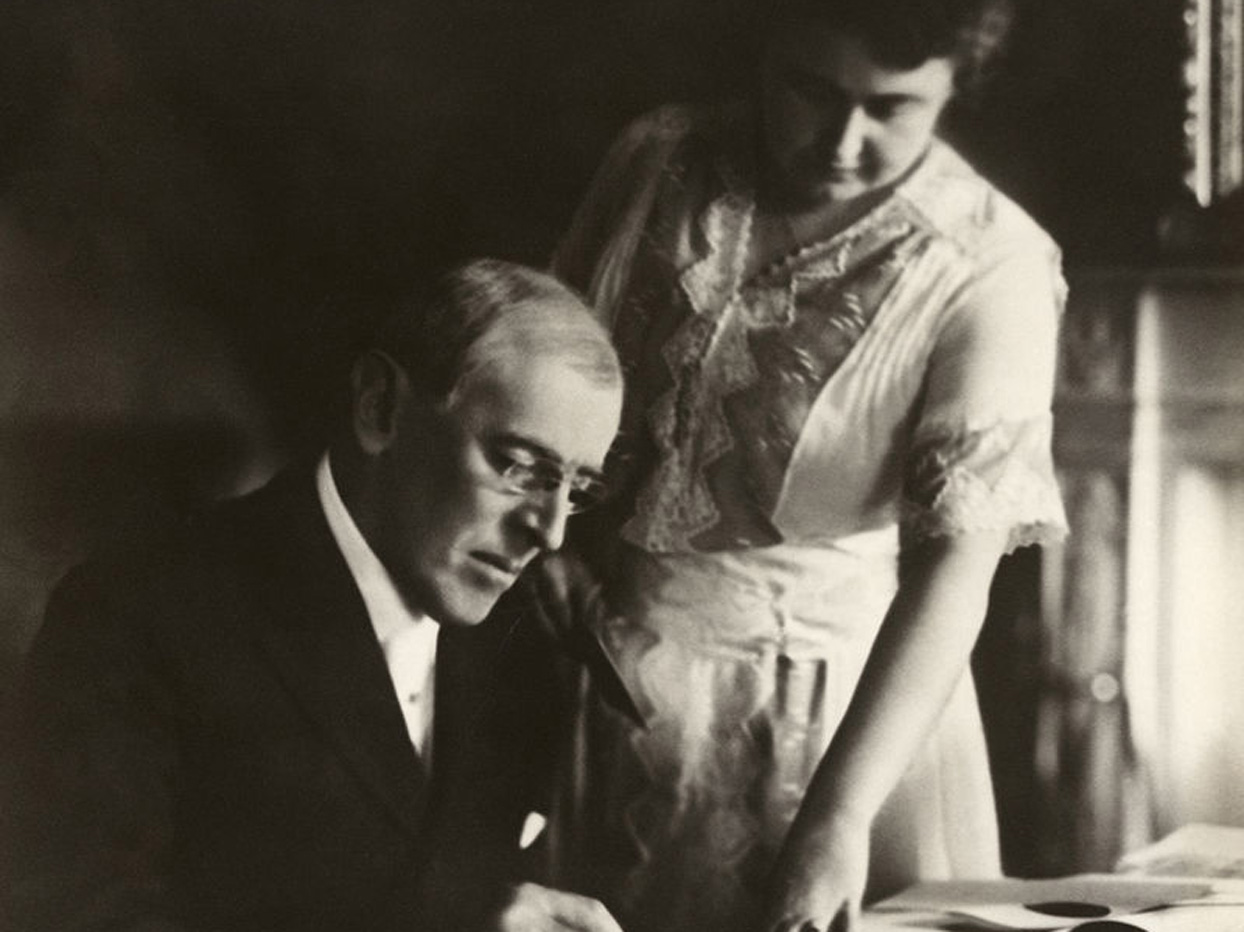
The twentieth century is characterized by a tendency to deal with diseases like anosognosia as crazy cerebral manifestations and, in most of the cases, diagnosed and treated in social terms through, at best, folk psychology.20 The content of the PSM creates a sense of coherency. What has been considered crazy behaviour from a third-person perspective during the last century ‘might be the best viable path through problem space and the most economical manner of achieving functional constraint satisfaction.’21
These patients might now provide us with an opportunity to study the mechanisms of construing a body-image representation and the dysfunctional combination of lesions in the right side of the brain. Understanding how everyone in a certain way ‘engage[s] in minor denials and rationalisations to cope with the stresses of our daily lives,’22 helps us deduce how to a degree we live under this constraint, even in non-pathological situations, leading us to confabulate through delusions and rationalizations other. We act as anosognostics in specific situations of our everyday life in denying parts of reality. In extreme cases of anosognosia, when a doctor asks an anosognosic patient to perform a two-handed task, the patient tries to use both hands and fails. In other tasks patients use their right hand to move the left to complete the action. These acts are considered defence mechanisms: confabulation, denial, rationalization projection and repression.
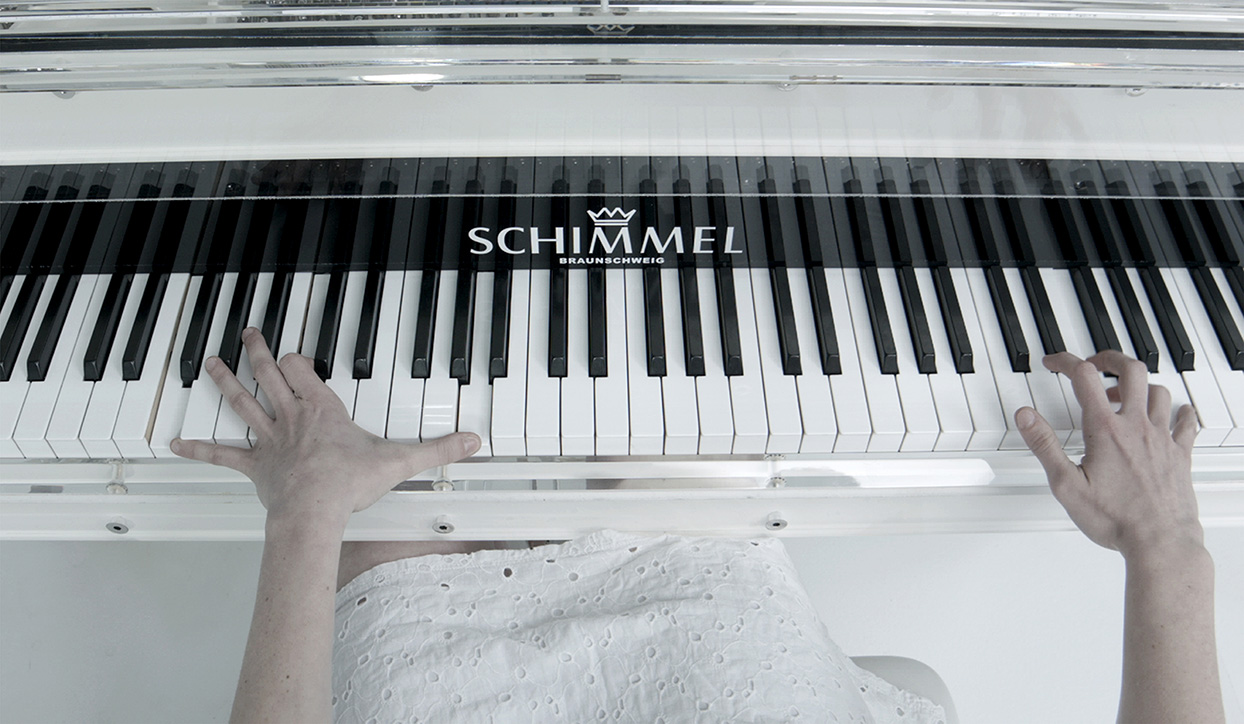
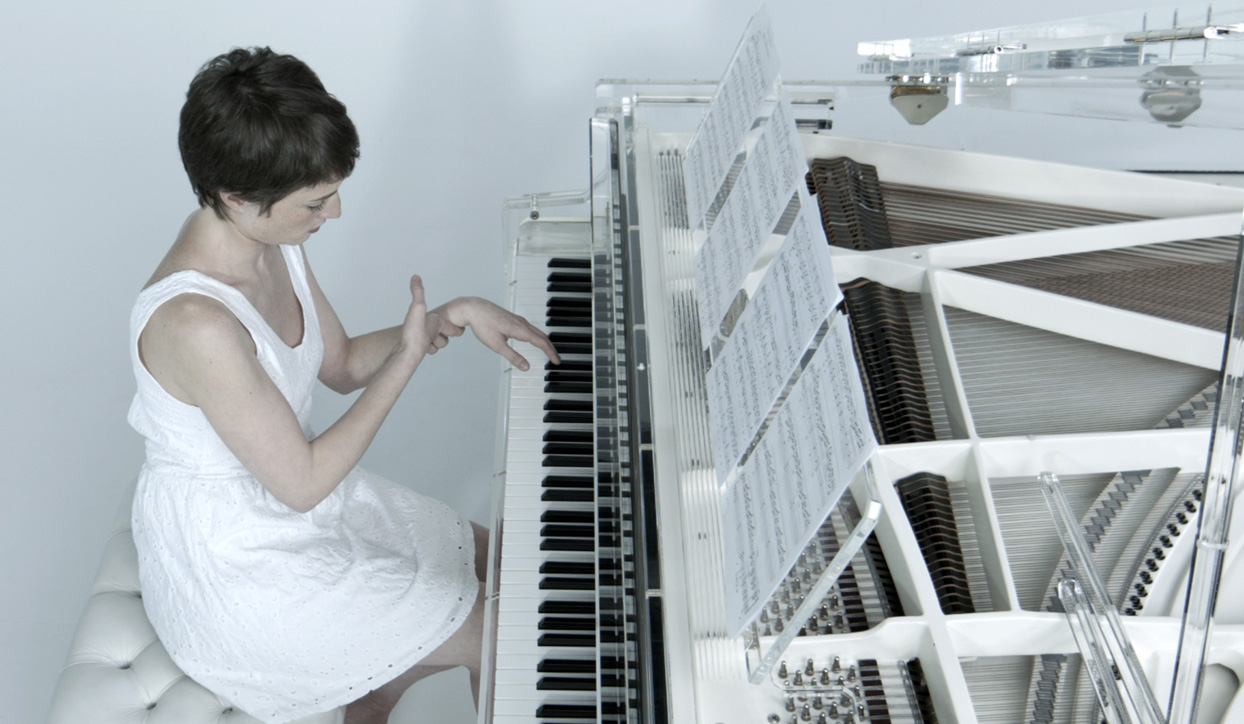
My project Post-Contingent Coherence (2016) discusses this disease to emphasize the process of global coherency that the conscious self-model provokes. Post-Contingent Coherence shows a pianist performing Nocturne Op. 55, No. 1 in F Minor by Frédéric Chopin. The pianist suffers from anosognosia, and the viewer’s perception changes according to the perspective of the camera, and also to what the audience hears from the instrument – an overlap of different melodic realities. The first-person perspective reports specific content of the PSM, mostly transparent, 23 but at the same time offers a glimpse of the opacity in terms of the hidden mechanisms involved in the process of self-coherency in these kinds of situations. In this artwork the first- and third- person perspectives are underscored to explore the self-model in regards to confabulations derived from the lack of feedback from the paralyzed left side of the body. In Post-Contingent Coherence, through images and sound, we can see different self-models interacting as distinct realities happen at once. ‘Some of the elements of the model may become opaque to a degree, by incorporating representations of their own functional structure, and thereby the possibility of its malfunction.’24
4. Final Section
In his book Being No One: The Self-Model Theory of Subjectivity, Metzinger offers a cluster of proposals for new ontological understandings of what phenomenology and cognitive sciences offer. These approximations are facilitated by a Sellarsian critical realist perspective from which epistemology and ontology are separated.25 Basically, what Metzinger proposes, following Sellars, is to overcome the modern approach of understanding the complexity of what and how knowledge is formed, moving beyond the body-mind dichotomy to instead focus on new parameters extending from applied phenomenology and science, such as that explained above, to analyse what the human being means in the twenty-first century.
Through different artistic projects I’ve developed an illustrative route in which some of the questions born of neuroscientific studies are explained in detail and considered a concern specific to both art and science. This relation, between science and art, has been produced throughout history and, today, specific contemporary art practices are dealing with the exploration of reality construction processes.26 Some notions brought up within this essay are being reconsidered in the field of these sciences related to mind, such as body alienation, cognitive abstraction or commodity based on feeling the experiences of another. Focusing on the cognitive sciences, however, one of the important issues to face is ethics – a field that Metzinger is completely involved in due to the suggestive openness of the PSM. Studies in this field not only provoke new possibilities for the enhancement of cognitive conditions, like nootropics or substances that improve cognitive function, but the ethical consequences and their legislation in order to approach them in favour of better universal conditions. And finally art, as manifestation, must face the necessity of giving new perspectives for these new spaces of thought.
1. See Ray Brassier, ‘The View From Nowhere,’ Journal for Politics, Gender and Culture 8, no. 2 (Summer 2011), www.uberty.org.
2. ‘According to Metzinger, a conscious system is one that possesses what he calls a Phenomenal World Model (PWM). This is a functional subsystem that combines information from its various drives into a single store. The self-consciousness schema moves beyond unification by introducing a distinction within the PWM between the system itself and all other aspects of the environment: the Phenomenal Self Model (PSM). Insofar as the PSM is a part of the PWM, it is possible for it to misrepresent things in just the way the PWM does: it can fail to adequately represent the contours of the body. [...] However, the phenomenal continuity of ownership that it generates cannot misrepresent.’ Peter Wolfendale, 'The Parting of the Ways: Political Agency between Rational Subjectivity and Phenomenal Selfhood,' 3–5.
3. Ibid.
4. Wilfrid Sellars (1912–1989) was an American philosopher who belongs, as a philosopher, to a modern epistemic branch called coherentism, founded on the notion that an idea exists when there is a ‘system of mutually supporting beliefs.’ Sellars saw a mind-independent world evidenced by the philosophy of perception. His approach rests on the concept that not all justified beliefs follow a path that end up as foundational knowledge.
5. Joshua Johnson, ‘Notes for Stereoscopy, Exit, and Escape,’ &&&Journal (2 July 2015), www.tripleampersand.org.
6. ‘The acknowledgement of parity follows from the realisation that the images (manifest and scientific) are not in fact competing over the same territory. A dualism is a distinction that fails to explain the connection between the terms it distinguishes. To distinguish between the normative and the factual is not to promulgate dualism once it is understood that this distinction furnishes the precondition for understanding the intrication of the conceptual and the physical. Philosophy discriminates, it distinguishes and separates, but always with a view to ultimate integration. Philosophy discriminates precisely in order to avoid dualism.’ Brassier, ‘The View From Nowhere.’
7. A naive prescientific way of understanding the mind in terms of essentiality, based on cultural and traditional theories, mostly in relation to a Cartesian overview of the separation between body and mind (i.e., the Hebrew ruach, the Arabic ruh, the Latin spiritus, the Greek pneuma or the Indian prana).
8. Thomas Metzinger, The Ego Tunnel: The Science of the Mind and the Myth of the Self (New York: Basic Books, 2010), 6.
9. See www.youtube.com.
10. Thomas Metzinger, ‘Out-of-Body Experiences as the Origin of the Concept of a “Soul,”’ Mind & Matter 3, no. 1 (2005):70.
11. Metzinger, ‘Out-of-Body Experiences,’ 59.
12. See www.youtube.com.
13. Andy Coughlan, ‘Out-of-body experiences are “all in the mind,”’ New Scientist, 23 August 2007, www.newscientist.com.
14. Metzinger, ‘Out-of-Body Experiences,’ 78.
15. The neurologist Olaf Blanke is one of the main scientists in this field.
16. Metzinger, ‘Out-of-Body Experiences,’ 67.
17. Vilayanur S. Ramachandran offers a new Darwinian slant on these ‘defense mechanisms,’ and anosognosia specifically. I agree with Ramachandran’s suggestion to replace the analyst’s couch with the Barany chair, a device, named for physiologist Barany Robert and used for aerospace physiology training. This maneuver points to the necessity to not focus only on the social aspect of the human being, but the scientific and empirical aspects as well.
18. Metzinger, The Ego Tunnel, 435.
19. Metzinger, ‘Out-of-Body Experiences,’ 78.
20. Woodrow Wilson, twenty-eighth president of the United States, suffered a stroke in 1919. One of the main consequences of the treatment of this state, or better said, the appreciation from a third-person perspective of him was that he could not defend Versailles Treaty. The Senate did not ratify it so that the League of Nations built by Woodrow would not count with the US army.
21. Metzinger, Being No One, 433.
22. Vilayanur S. Ramachandran, The Tell-Tale Brain: A Neuroscientist's Quest for What Makes Us Human (New York: W. W. Norton & Company, 2012), 211.
23. According to Metzinger, his concept of transparency refers to the experience of seeing reality but not the process that allows the formation of that reality.
24. Wolfendale, ‘The Parting of the Ways,’ 3.
25. The term ‘critical realism’ was coined in the 1920s by Wilfrid’s father, Roy Wood Sellars.
26. Johannes Kepler and Dutch art in the seventeenth century (e.g., Johannes Vermeer and Samuel van Hoogstraten). See Svetlana Alpers, The Art of Describing: Dutch Art in the Seventeenth Century (Chicago: University of Chicago Press, 1983) or the first studies in neuroscience with Ramón y Cajal and Spanish art at the beginning of the twentieth century (e.g., Salvador Dalí and Joan Miró). See Jaime Brihuega and Concepción Lomba Serrano et. al, eds., Fisiología de los sueños. Cajal, Tanguy, Lorca, Dalí... (Zaragoza: Prensas de la Universidad de Zaragoza, 2015).
Miguel Ángel Rego Robles is an artist and researcher who lives in both Spain and the Netherlands. He studied Computer Science and Fine Arts at Complutense University in Madrid and is currently working on his Master of Arts degree at the Dutch Art Institute in Arnhem, the Netherlands. He was awarded a pre-PhD scholarship with which he works at the CSIC (Spain) and is a member of the editorial and artistic collective Brumaria. He has exhibited his projects and lectured in both national and international contexts.